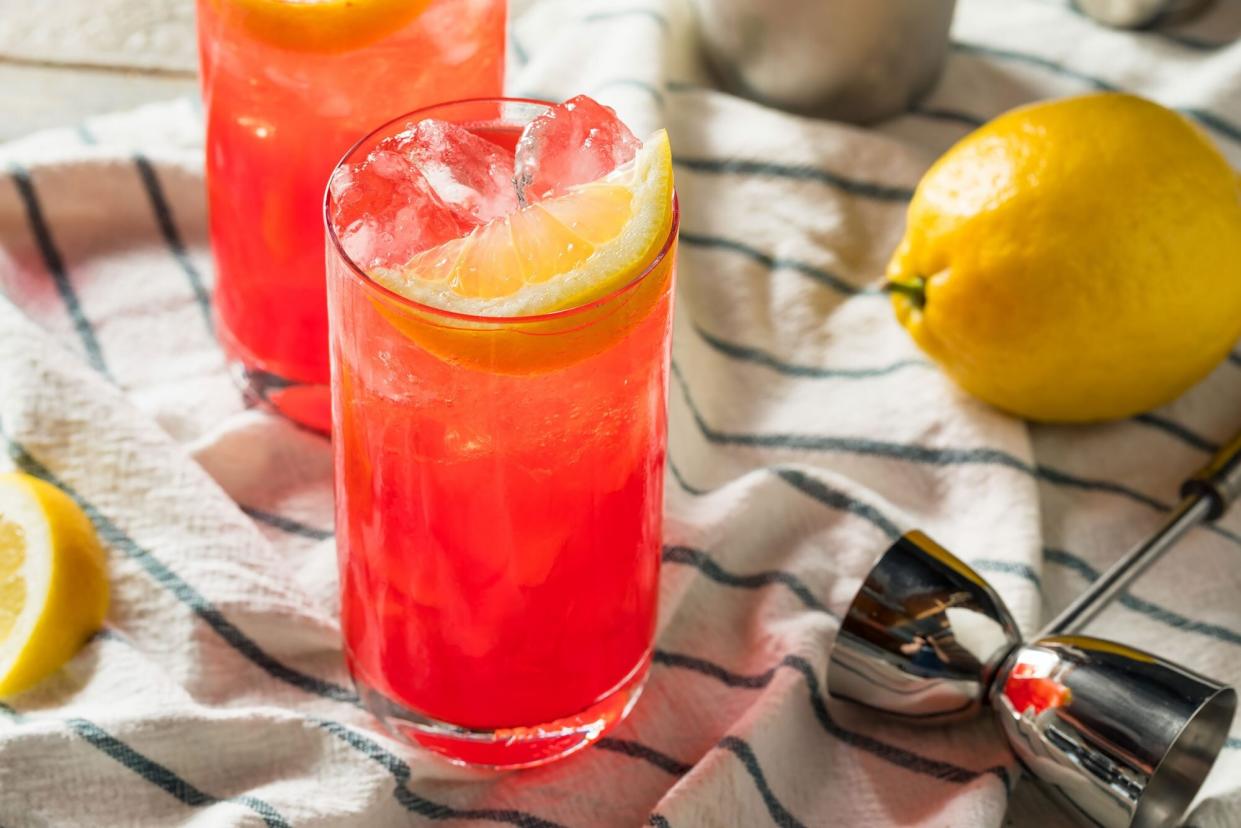Surprise! Sloe Gin Isn't Technically a Gin

Brent Hofacker / Getty Images
Let's be clear: while it may seem like gin by any other name, sloe gin is technically a liqueur. The berry-pink drink is born a regular gin, but the booze is then steeped with sugar and sloe (a rouge berry from the Blackthorn plant) to sweeten the spirit and lower the proof to as low as 15%. "These berries are essentially related to the plum," says Barna Jeremias, bar manager at LPM Restaurant & Bar in Miami. "Sloe berries emit a dark reddish-purplish color and are comparable in flavor to cranberries, currants, and tart cherries."
When combined with gin, it makes a slightly sweet, warming "gin" that holds up well in cocktails or toned down with soda or tonic.
What is Sloe Gin?
"Here's the easiest way to describe what sloe gin is," says Wilmer Nolasco, head bartender of Leroy's in Brooklyn. "It's a traditionally-produced gin with usual botanicals (think juniper, coriander, and citrus). Then, the highly astringent sloe berry is macerated (or steeped) in the gin, and sweetened. It turns into a beautifully soft, slightly sweet, botanical, nutty liqueur that's a little lower in alcohol content than a traditional gin."
How Is Sloe Gin Made?
While most neon-tinged liqueurs were born in the '80s and '90s, sloe gin dates back centuries. "In the 1700s, hedges made of sloe plants were a common way of separating private lands in Britain," says Jonathan Torres, the food and beverage manager of NoMo SoHo.
The issue is that sloe berries aren't particularly good; they're thorny, astringent, and pretty bitter. So to handle the high number of sloe berries surrounding the country, citizens got creative and tamed the berry with booze. "It's bitter on its own, and not something that gets cooked with, so there aren't any applications for it other than jams [and gin]," Torres notes.
"Sloe berries on their own are very tart and astringent," says Nicolas O'Connor, the director of mixology and culinary arts at Apotheke Mixology. "Steeping them in gin allows for the tartness and warmth of the fruit to come through."
How Does Sloe Gin Differ From Other Types of Gin?
While regular London Dry gins are 45 to 47% in alcohol, sloe gins can drop as low as 15% ABV, depending on the producer. Another dead giveaway of a sloe gin is its pink color, which can range from pale pink to rich and ruby.
What Does Sloe Gin Taste Like?
"The palate [of a sloe gin] brings ripe sweetness, fresh acidity, and sour cherry, with the sloe berries bringing a delicious richness and depth of flavor," says Pascal Shin, a beverage consultant behind West Hollywood's The Den.
"A quality sloe gin has the classic characteristics you'd associate with gin," says O'Connor. "It displays a pleasant herbal blend with strong juniper undertones that blend with the ripe sweetness and acidity of the sloe berries. The berry's tartness and mildly sweet notes give a deep and warm flavor, and I'll find hints of sour cherry, pomegranate, and cranberry."
While these notes largely ring true for all sloe gin, flavors will vary subtly from producer to producer. Some are lean, plummy and earthy, while others are saccharine and sugary. Mother's Ruin out of London has notes of citrus peel and dark berries and a silky texture, while Germany's Elephant Shoe is higher in alcohol, making it ideal for cocktails. Ford's Gin calls for its high-proof gin — already a bartender favorite — and steeps it for 12 weeks with sugar and sloe fruit.
What Is a Sloe Gin Fizz?
One of sloe gin's classic applications is in a highly bubbly, blush-toned fizz alongside lemon juice, sugar, egg white, and a top-up of soda.
"I enjoy a sloe gin fizz and a couple of other gin classics now and again, but now I enjoy utilizing sloe gin as a modifier in more complex cocktails," says O'Connor. "Sloe gin's warm depth of flavor adds a bright herbal and juicy taste while also holding up around other bold flavors. Its versatility is useful because you can lean into either its gin notes or its sloe, berry side — it works well with other citric and sweet fruits, adding an herbal undercurrent, but it also can give great sweet and sour winter fruit notes to savory roots and vegetables."
Jeremias recommends adding sloe gin to a Tom Collins, Gimlet, or Negroni — "you'll see the magic happen! The complexity and flavor of your cocktail elevate to another level." Essentially, it's surprisingly versatile, melding juniper with a light-on-its-feet freshness from the blue-hued berry in whatever application you fancy.

